Flame Angelfish: A Beautiful Addition to Your Aquarium
Updated: October 15, 2023
159
Introduction
Are you looking to add a burst of vibrant colour to your aquarium? Look no further than the flame angelfish! This beautiful fish, also known as the flame angel or entropy curricula, is a popular choice among aquarists for its striking appearance and unique characteristics. In this article, we will explore everything you need to know about flame angelfish, including their habitat, compatibility with reef tanks, care requirements, common issues, and breeding behaviour.
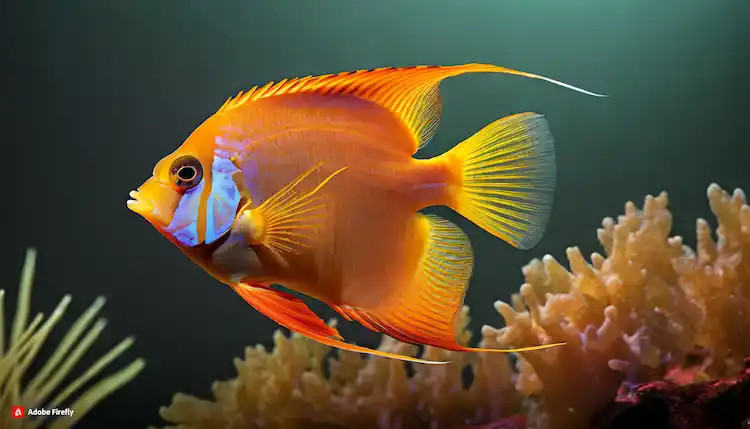
What is a Flame Angelfish?
These angelfish, scientifically known as centropyge loricula, is a species of dwarf angelfish that belongs to the Pomacanthidae family. It is native to the central Pacific, particularly the Marshall Islands and Fiji. This fish has a distinctive colouration, featuring a vibrant orange-red body with vertical elongated black stripes on its sides. The combination of these colours creates a stunning visual impact.
Habitat of These Angelfish
These fish inhabit coral reefs in the central Pacific. They are commonly found in shallow waters, often near live rock formations, where they can graze on algae and other microorganisms. These fish prefer stony and soft corals as hiding places and forage areas.
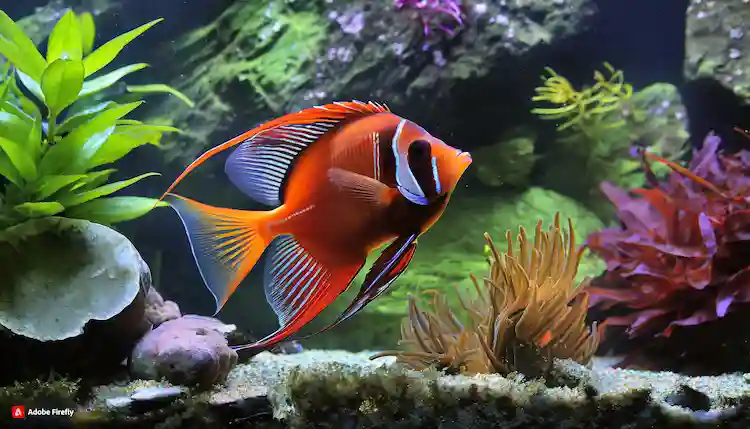
Characteristics of These Angelfish
This fish is a relatively small fish, reaching an average size of 4 inches in length. They have a typical angelfish body shape, with triangular dorsal and anal fins. One of their most distinctive features is their bright colouration, which makes them stand out in any aquarium. They have a semi-aggressive temperament and can be territorial towards other fish, especially those of a similar size and appearance.
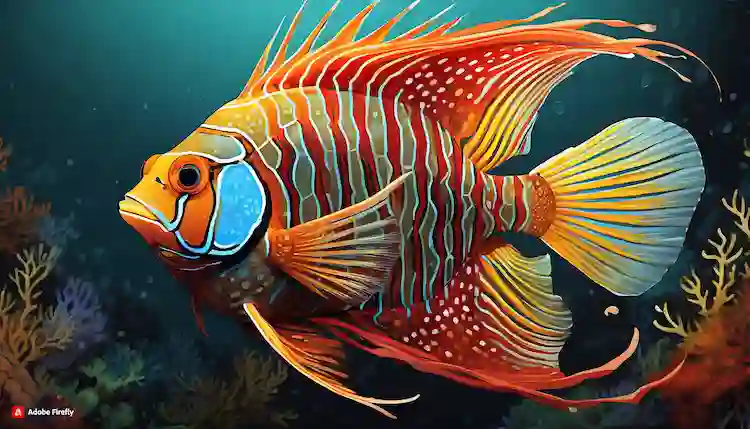
Can These fish be kept in a reef tank?
They are known to nip at corals, making them potentially incompatible with certain species of reef tanks. However, it is essential to note that individual behaviour can vary, and some angelfish may show less interest in corals. If you plan to keep this fish in a reef tank, it is advisable to choose stony corals that are larger and more resilient to grazing. Soft corals and invertebrates, such as clams, may also be at risk of being disturbed by these fish.
Tips for keeping these fish in a reef aquarium
If you decide to house these fish in a reef aquarium, there are several considerations to keep in mind. Firstly, it is recommended to provide a larger tank size to accommodate their potential territorial behaviour. A minimum tank size of 70 gallons is often recommended to ensure sufficient swimming space for these fish. Additionally, incorporating live rock formations in the tank can offer grazing opportunities for these fish and help mimic their natural habitat.
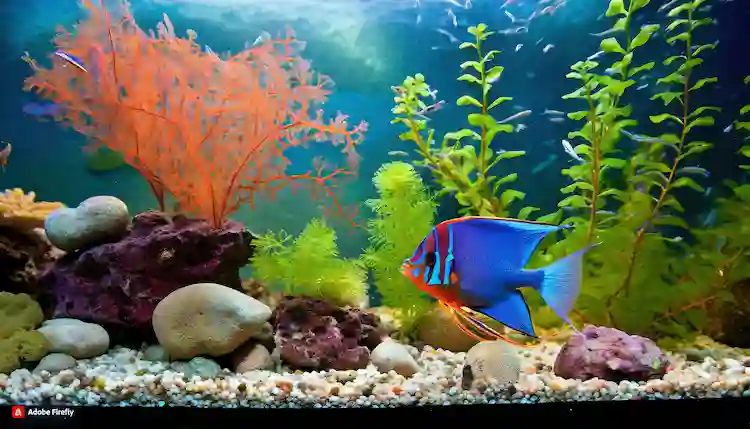
Recommended tank size
As mentioned earlier, a minimum tank size of 70 gallons is generally recommended for keeping them. This ensures they have enough space to freely swim and establish their territories. Providing a well-maintained and spacious environment is crucial for the overall health and well-being of these fish.
How to care in an aquarium?
Feeding these fish a well-balanced diet is essential for their health and vibrant colouration. These fish are omnivorous and require a mix of plant-based and protein-based foods. High-quality angelfish preparations, including pellets and flakes, should be included in their diet. Additionally, supplementing their meals with live or frozen mysis shrimp and brine shrimp can provide them with valuable nutrients.
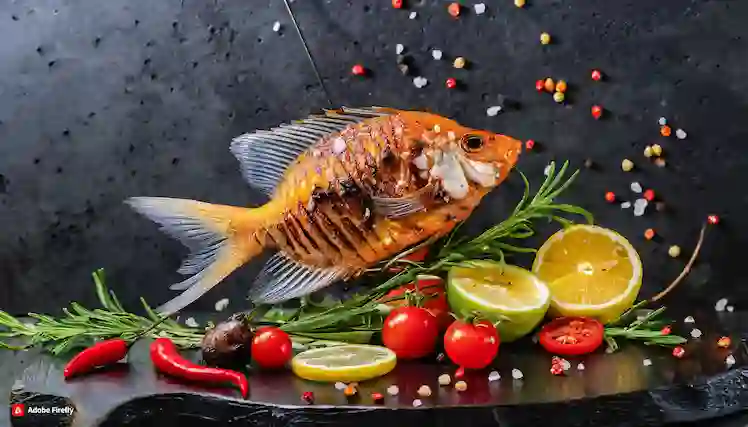
Providing suitable tank conditions
Creating optimal tank conditions is key to ensuring their well-being in captivity. Keeping the water parameters stable, including maintaining appropriate temperature, salinity, and pH levels, is crucial. They are saltwater fish and require a saltwater aquarium with proper filtration systems. Regular water changes and diligent maintenance will help keep the tank environment clean and favourable for these fish.
Compatible tankmates
When choosing tankmates for these angelfish, it is important to consider their semi-aggressive nature and territorial tendencies. They may not tolerate fish of a similar size or appearance. However, there are several fish species that can coexist with these fish peacefully. For example, peaceful community reef fish, such as clownfish, gobies, and tangs, can make suitable tankmates. It is advisable to research the compatibility of specific fish species before introducing them to the same tank.
What are the common issues encountered when keeping These Fish?
Flame angelfish and aggression towards other fish
As mentioned earlier, they have a semi-aggressive temperament, particularly towards fish of similar size and appearance. It is not uncommon for them to show territorial behaviour and engage in aggressive interactions with tankmates. To minimize this issue, it is essential to provide ample space and hiding spots in the aquarium to help reduce conflicts between fish.
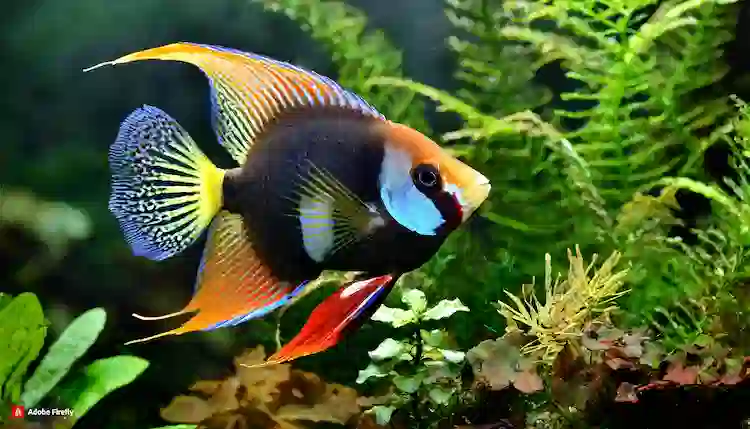
Flame angelfish and their tendency to nip at corals
They are notorious for their tendency to nip at corals. This behaviour can be problematic in reef tanks where corals are an integral part of the ecosystem. Choosing larger and more robust corals can help reduce the impact of their grazing. Additionally, monitoring the fish closely and intervening if necessary can help prevent excessive damage to corals.
Possible diseases and health problems
Like any other fish species, these fish are susceptible to various diseases and health issues. Common ailments include ich, marine velvet, and bacterial infections. It is crucial to maintain optimal water quality, provide a balanced diet, and regularly monitor the fish for any signs of illness. Quarantining new specimens before introducing them to an established tank can also help prevent the spread of diseases.
Can these fish breed in a home aquarium?
Breeding behaviour
They have been successfully bred in home aquariums, although it can be a challenging endeavour. Like other angelfish species, they exhibit a monogamous mating system, where a pair forms a bond and remain together. During courtship, the male and female engage in elaborate displays, swimming together, and sometimes even circling or touching each other.
Challenges of breeding in captivity
Breeding these fish in captivity can pose several challenges. One of the main difficulties is finding and pairing a compatible male and female. Sometimes, aggression between potential mates or the lack of interest in breeding can hinder the process. Additionally, creating optimal conditions for successful egg fertilization and raising the fry can be complex and require specialized knowledge and equipment.
Tips for successful breeding
If you are interested in breeding these fish, there are a few tips that can increase your chances of success. Firstly, provide a well-maintained and spacious breeding tank with suitable hiding places and live rock for the pair to establish a territory. Maintaining stable water parameters, including temperature and salinity, is crucial for successful breeding. Lastly, closely monitor the pair during courtship and egg-laying, and be prepared to provide specialized care for the fry if they hatch.
Conclusion
In conclusion, these angelfish are a captivating addition to any aquarium, known for their stunning appearance and unique characteristics. While they may pose some challenges, such as their potential for coral nipping and territorial behaviour, the rewards of caring for these beautiful fish are well worth the effort. With the right tank setup, a balanced diet, and careful attention to their specific needs, aquarists can enjoy the vibrant colours and graceful presence of these fish in their home aquariums. Whether you’re an experienced hobbyist or just starting, these fish can bring a burst of life and colour to your underwater world.
What is a flame angelfish?
A flame angelfish, also known as a flame angel, is a species of pygmy angelfish that is known for its vibrant colouration and striking appearance.
Can flame angelfish be kept in a reef tank?
Flame angelfish are generally not considered reef-safe because they have been known to nip at and damage coral and clam mantles. However, some individuals may adapt well to a reef environment if introduced at a young age.
What is the minimum tank size for a flame angelfish?
The recommended minimum tank size for a flame angelfish is around 30 gallons. Providing ample swimming space and hiding spots is important for their well-being.
What does a flame angelfish look like?
Flame angelfish have a vibrant orange-red body colour with a vertical elongated black spot on the anterior part of the dorsal fin. They also have four or five bars on the sides, purple-blue and black bands on the posterior part of the dorsal fin, and a yellow-orange caudal fin.
Is the flame angelfish a popular choice for aquarium fish?
Yes, the flame angelfish is a popular choice for saltwater aquarium fish, especially angelfish enthusiasts. Its striking appearance and peaceful temperament make it a sought-after addition to reef tanks and fish-only setups.
Can flame angelfish be kept with other angelfish?
While flame angelfish can be kept with other peaceful angelfish species, it is best to avoid keeping multiple flame angelfish together as they may exhibit territorial behaviour.
What do flame angelfish eat?
Flame angelfish are omnivorous and should be provided with a varied diet. They can be fed a combination of spirulina-based flakes or pellets, as well as meaty foods such as brine shrimp, mysis shrimp, and chopped frozen seafood.
Do flame angelfish have any specific care requirements?
Flame angelfish requires a well-maintained saltwater aquarium with quality water parameters. It is important to provide them with ample hiding places, as well as live rock for grazing and territorial displays.
Can flame angelfish be kept with other coral beauty angelfish?
Flame angelfish and coral beauty angelfish are both members of the Centropyge genus and may exhibit aggressive behaviour towards each other when kept in the same tank. It is best to house them separately to avoid any conflicts.
Where are flame angelfish from?
Flame angelfish are found in the Indo-Pacific region and are specifically known to originate from areas such as Cebu in the Philippines.
Please Write Your Comments